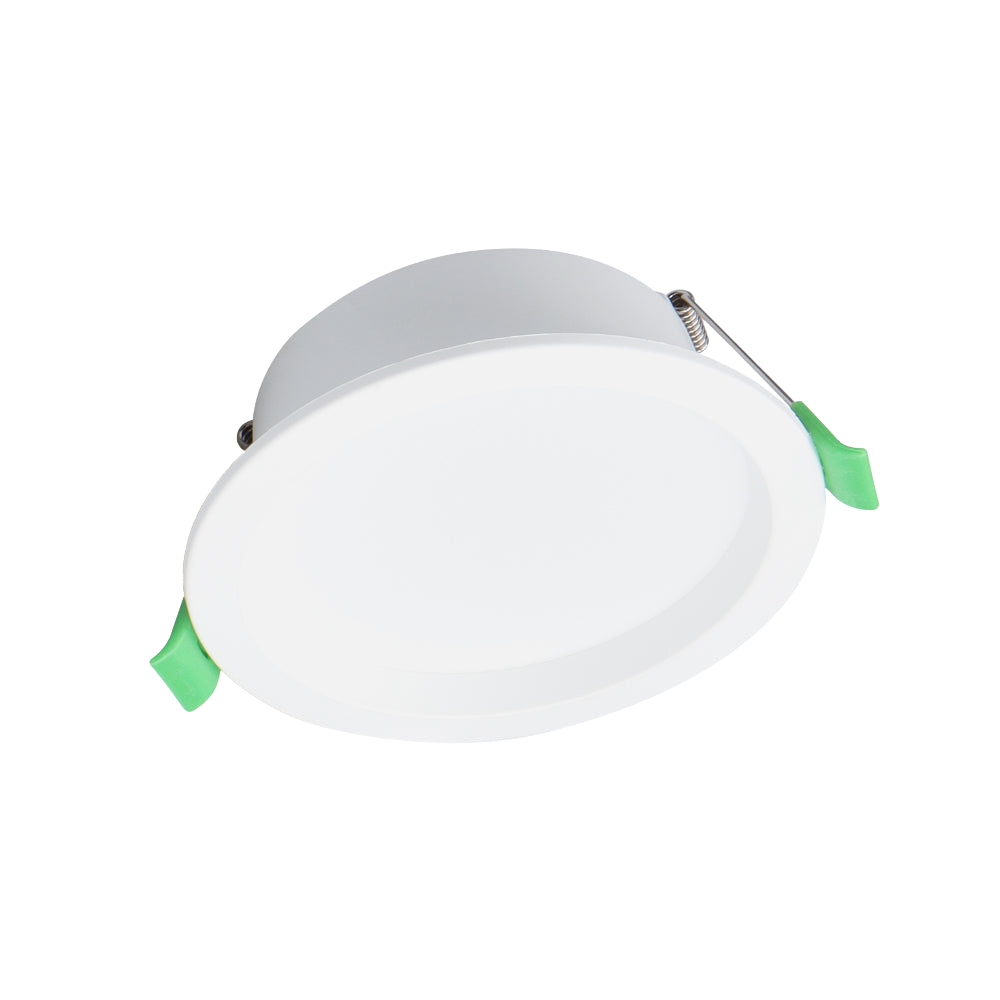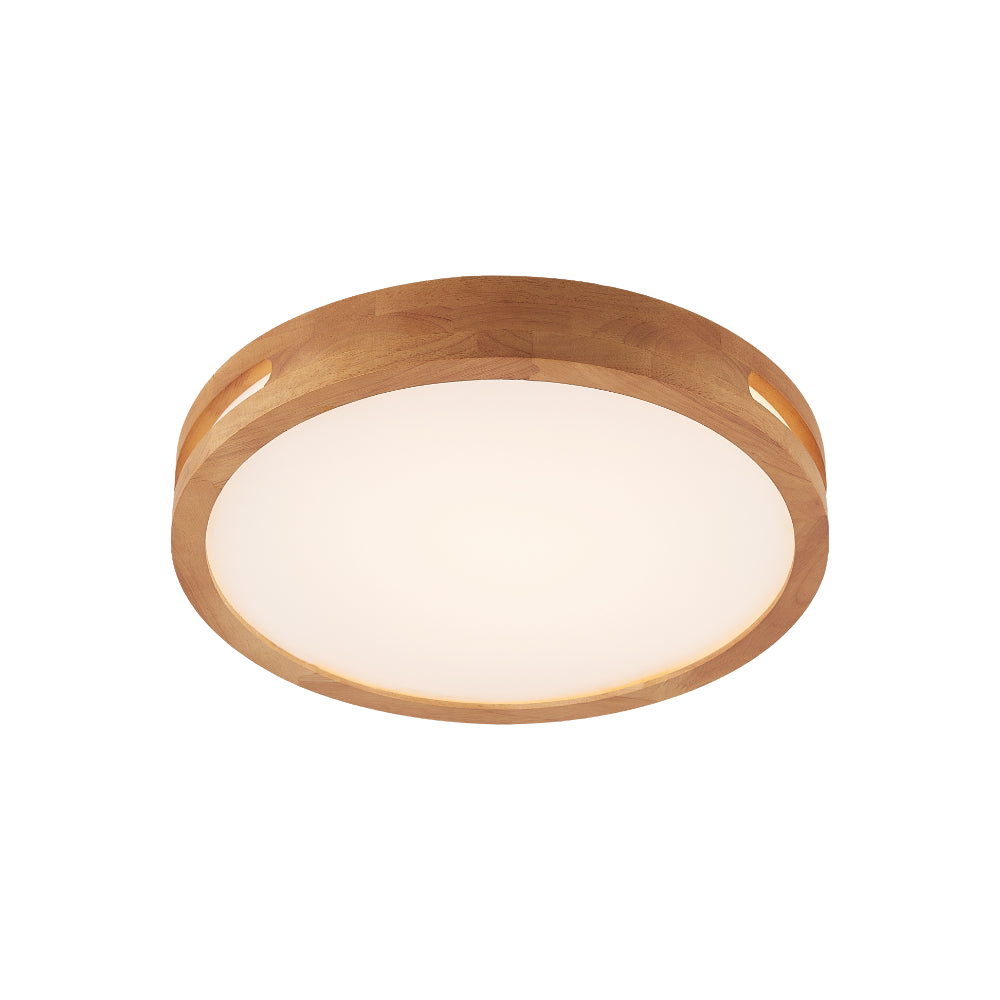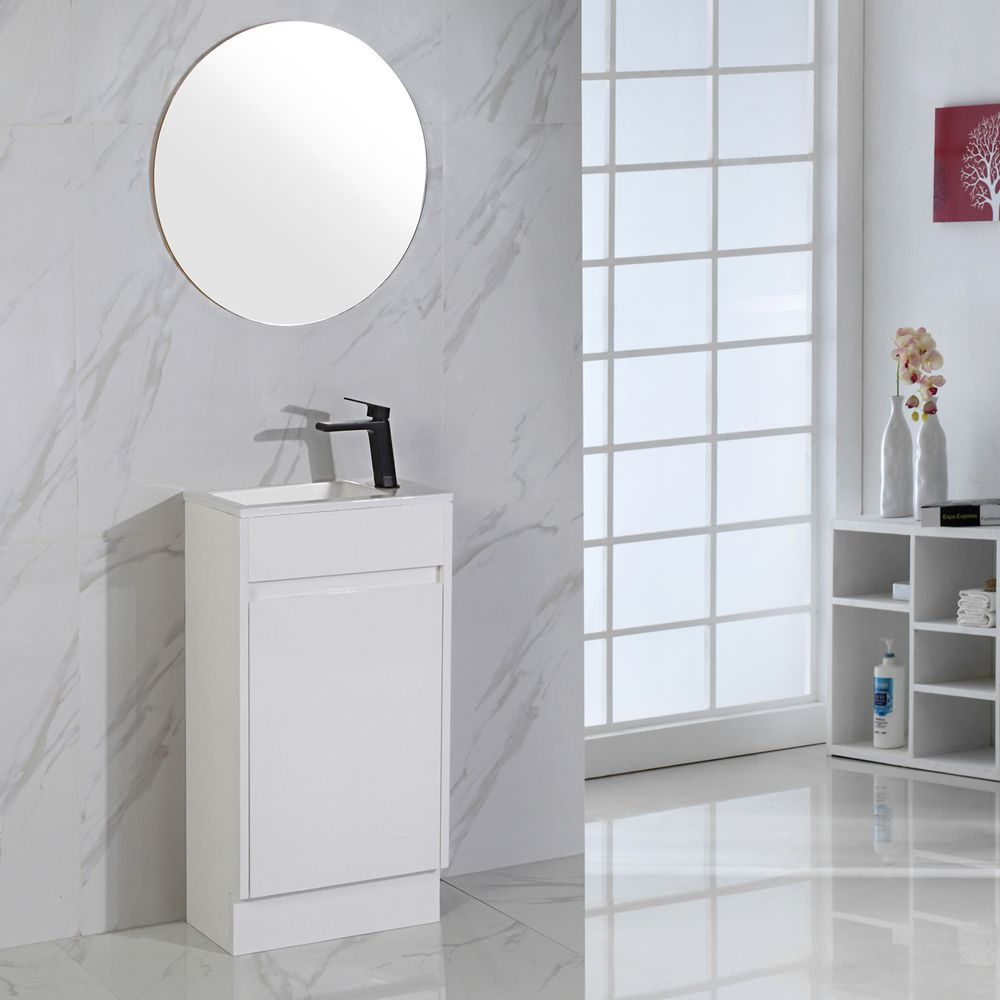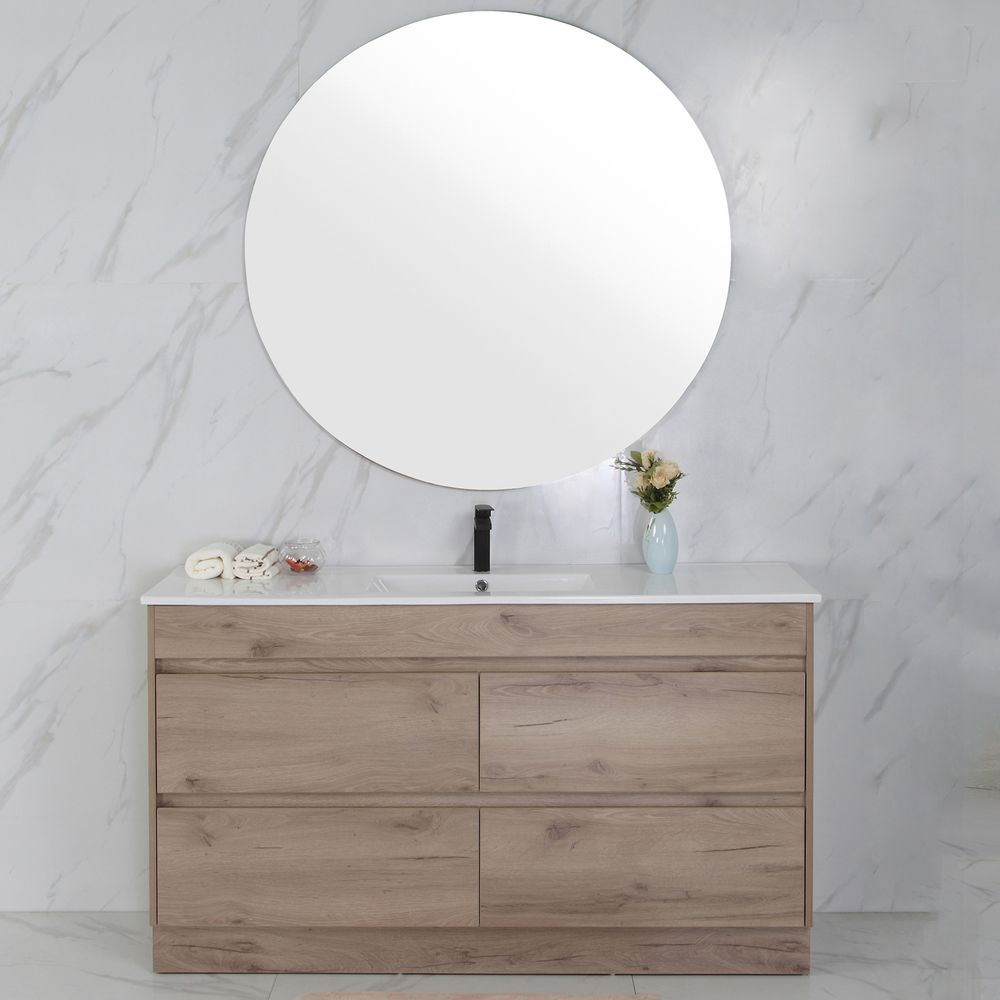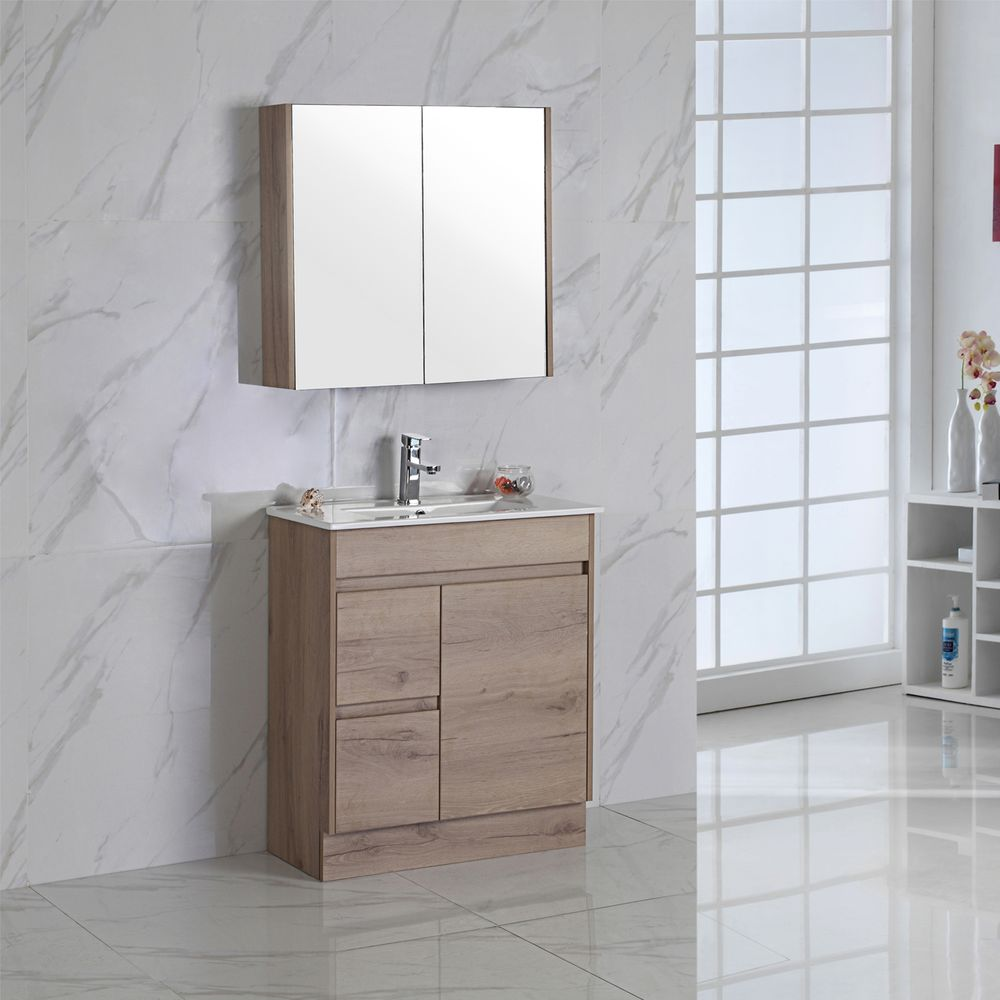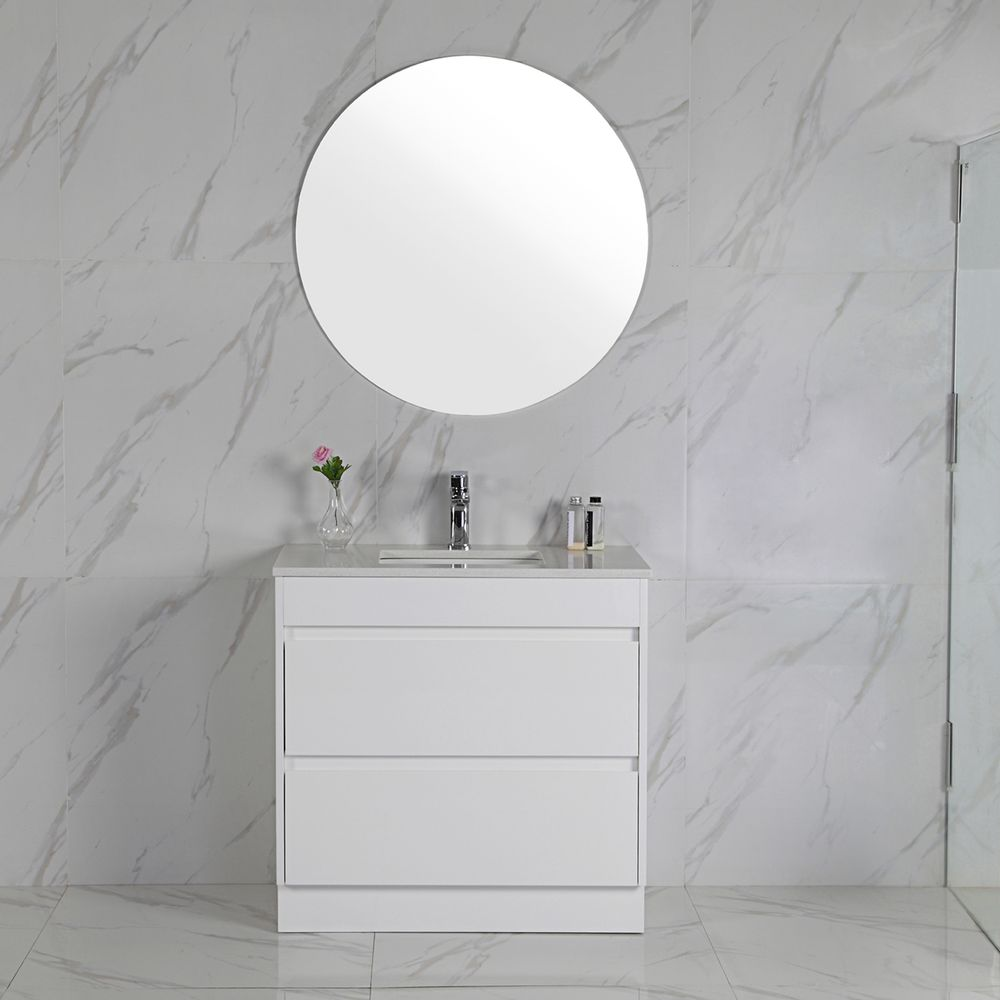How to Choose the Best Freestanding Bathroom Vanity for Your Layout
This guide makes it easy to choose the right freestanding vanity for your space, storage needs and everyday use, with top vanity picks to make your decision easier.

If you want a bathroom vanity that’s easy to install, hides your plumbing and gives you plenty of storage, a freestanding vanity is a great place to start. The key is choosing one that actually suits your layout, not just the look. Whether you’re working with a narrow ensuite, a busy family bathroom or something in between, this guide will help you choose the right size, shape and style to make it all work.
What is a Freestanding Vanity (and When Should You Use One)?
A freestanding vanity is a floor-mounted unit that sits directly on your bathroom tiles. It doesn’t hang off the wall or float; instead, it gives you a more solid, furniture-style feel with a base that covers your plumbing and connects neatly to the floor.
Why choose a freestanding vanity?
- Easier to install – especially if you’re keeping existing floor plumbing
- No wall bracing required – ideal for renovations or older homes
- More traditional look – suits classic, Hamptons, transitional or family-style bathrooms
- Visually grounded – works well when you want the vanity to anchor the room
Freestanding vanities work best in bathrooms where space isn’t ultra-tight and where you want the look to feel more built-in or substantial. They also hide exposed pipes better than most wall-hung models, especially if you’re retrofitting into an existing layout.
Tips to Choose the Right Freestanding Bathroom Vanity
1. Measure your space before you shop
Before you fall in love with a vanity online, make sure it’ll actually work in your room. Freestanding vanities sit directly on the floor, so they need enough clearance around them to open drawers, swing doors and let you move comfortably.
What to measure:
- Wall width: Measure the wall where the vanity will sit, then subtract any skirting, pipe boxing or wall features.
- Front clearance: Leave at least 600mm in front of the vanity so you can stand, open doors or drawers and not feel cramped.
- Side clearance: Allow enough space between the vanity and nearby walls, showers or toilets – 150–300mm is a safe buffer.
- Door and drawer swing: Make sure the unit won’t block other fixtures when opened.
Layout tips by bathroom size
-
In small bathrooms, a slimline unit like the Aulic Brant 465mm Floorstanding Vanity gives you essential storage without taking over the room.
Aulic Aulic Brant 465mm Floorstanding Powder Room Vanity
Make the absolute most of your compact s..
-
For medium spaces, something like the Aulic Max 750mm balances drawers and under-basin access.
Aulic Aulic Max 750mm Floorstanding Vanity
There is no doubt, our Max Floor / Wall ..
-
In larger bathrooms, the Aulic Alice 1200mm gives you wide storage and a generous benchtop – ideal if two people use the space daily.
Aulic Aulic Alice 1200mm Floorstanding Vanity
If you wish to install a classic, clean ..
Once you know your clearances and limits, choosing a vanity becomes way easier. You can filter by size directly in Buildmat’s freestanding vanity collection.
2. Pick the correct size
The best vanity for your space is the one that fits your layout and your lifestyle. Too small, and you’ll run out of storage. Too large, and you’ll crowd the room. Freestanding vanities come in a wide range of sizes, so once you know your available wall space, you can pick something that works without compromise.
Common freestanding vanity sizes
-
465mm freestanding vanity to 600mm freestanding vanity: Great for powder rooms or tight ensuites. or
👉 Try: Aulic Maya 600mm Floorstanding Vanity or Aulic Revit 465mm Floorstanding Vanity
-
750mm freestanding vanity – The sweet spot for most small-to-medium bathrooms
👉 Try: Aulic Max 750mm Floorstanding Vanity -
Freestanding bathroom vanity 900mm – More bench space, better storage, still compact
👉 Try: Aulic Leona 900mm Floorstanding Vanity -
Bathroom vanity 1200mm freestanding – Ideal for couples or busy bathrooms with shared use
👉 Try: Aulic Alice 1200mm Floorstanding Vanity -
1500mm freestanding vanity to 1800mm freestanding vanity – Best for large bathrooms, master en-suites or when you want a double basin setup or
👉 Try: Aulic 1500mm Varcelli Floor Standing Vanity or Aulic 1800mm Varcelli Floor Standing Vanity
Not sure what size to choose?
If your bathroom feels narrow, stick with 750mm or under to keep things open. If you’ve got room to move or want to share the space comfortably, go 900mm or larger.
This Aulic Revit 465mm Floorstanding Vanity is perfect for small bathrooms
3. Think About Storage Style: Drawers, Doors or Both?
The storage layout of your vanity makes a big difference to how it works day to day, especially in smaller bathrooms where you don’t have room for extras like shelves or tallboys. Freestanding vanities give you more internal volume than wall-hung options, but how that space is divided still matters.
When to choose drawers
Drawers are ideal for everyday items. They’re easier to access and help keep things organised, no digging around at the back of a dark cupboard.
- Best for: Busy bathrooms, shared spaces, anyone who likes tidy categories
- Try: Aulic Max 750mm Floorstanding Vanity — clean design with generous drawers
When to choose doors
Cupboard-style doors work well when you need flexible vertical space, like for tall bottles, bins or extra towels. They’re also a good fit if you want a more traditional, furniture-style look.
- Best for: Guest bathrooms, budget-friendly updates, classic styles
- Try: Aulic York 750mm Floorstanding Vanity
Combo styles
Some freestanding vanities give you the best of both — drawers for small items and cupboard space below. These are great all-rounders, especially in medium or family bathrooms.
- Best for: Multi-user spaces, small families, flexibility
- Try: Aulic Maya 750mm Floorstanding Vanity
If your plumbing runs through the centre, check the product spec to see if drawers are offset to avoid clashing with pipework.
5. Match the Finish to Your Bathroom Style
Once you’ve locked in the size and storage layout, the next step is picking a vanity finish that suits the rest of your space. Freestanding vanities come in everything from matte white and timber-look to bold colours and fluted textures – so it’s worth thinking about the overall feel you’re going for.
Timber-look or oak finishes
These work well in Scandi, Japandi, coastal or natural-style bathrooms. They add warmth and texture, especially when paired with brushed nickel or brass tapware.
Aulic Aulic York 600mm Floorstanding Vanity
The York slim vanity is a perfect vanity..
Matte white
Clean and timeless. Matte white vanities blend into the background, making them ideal for minimalist, modern or all-white bathrooms. They also pair well with almost any basin or tapware finish.
Try: Aulic Leona 600mm Floorstanding Vanity
Aulic Aulic Leona 600mm Floorstanding Vanity
Keep all of your bathroom need in one pl..
Fluted and curved fronts
These are perfect if you want something more styled or tactile – great for trend-led bathrooms, boutique ensuites or mid-century spaces.
Try: Aulic Curva 1200mm Fluted Vanity (This one’s wall-hung, but great for styling inspiration or matching tone)
What Basins and Tapware Work with Freestanding Vanities?
The vanity you choose sets the tone, but your bathroom basin and tapware complete the look. With freestanding vanities, you can usually customise both, depending on whether the unit comes with a top, cutout, or integrated basin.
Basin types to consider
- Above-counter basins. Sit on top of the vanity and make a visual statement. Great for modern, sculptural bathrooms.
- Undermount basins. Sit flush with the vanity top. Clean, minimalist, and easy to wipe down.
- Semi-inset or integrated. Often pre-installed into the vanity top – easy to clean and great for rental-friendly renos or quick installs.
Before buying, check if the vanity comes with a top and basin, and if not, confirm basin dimensions and cutout compatibility.
Tapware that works well
Freestanding vanities typically suit bench-mounted tapware, but some vanities also work with wall-mounted sets if the plumbing allows.
-
Bench-mounted taps: Easiest to install with above-counter basins. Choose short mixers for compact setups or tall mixers for higher basins.
-
Wall-mounted taps: Keeps the bench clean and adds a luxe feel. Great with tiled splashbacks and modern styles.
Tip: Match your basin and tapware finish (e.g. brushed nickel with soft oak, matte black with white gloss) for a cohesive look.
Ready to Choose Your Freestanding Vanity?
If you’ve measured your space, considered your storage needs, and found a style you love, you’re ready. Freestanding bathroom vanities are one of the easiest ways to upgrade your bathroom without overcomplicating things. They offer solid storage, timeless design, and a practical fit for most Australian layouts.
Explore Buildmat’s full range of freestanding vanities.
FAQs
Can you wall-mount a freestanding vanity?
No, freestanding vanities are designed to sit directly on the floor. If you’re after a floating look, go for a wall-hung vanity instead.
Do freestanding vanities come with the top and basin?
Some do, some don’t. Always check the product details. Many Buildmat vanities are sold as base cabinets only, giving you the freedom to choose your own basin and tapware.
What’s the best vanity size for a small bathroom?
Look for units between 450mm and 750mm wide. Slim drawers or single-door models work best, like the Aulic Brant 465mm.
Do I need to seal around a freestanding vanity?
Yes, silicone around the edges helps stop water getting underneath. This protects your floors and helps avoid mould or swelling over time.
Are freestanding vanities easy to install?
Generally yes, especially if your plumbing comes through the floor. Most don’t need wall bracing, and some come fully assembled. Just allow room for waste and water connections.
More Helpful Tips on Choosing a Bathroom Vanity
Here are more bathroom and vanity blogs you might find helpful:
- Tips for Choosing the Perfect Bathroom Vanity
- A Guide to Bathroom Vanities (Everything You Need to Know)
- Bathroom Vanity Trends in 2025 You’ll Want to Know Before Renovating
- Bathroom Vanity Ideas: From Pinterest to Real Life
- What Is the Best Material for Bathroom Cabinets?
- How Much Are Bathroom Cabinets and What Affects the Price?























































































































































































































































